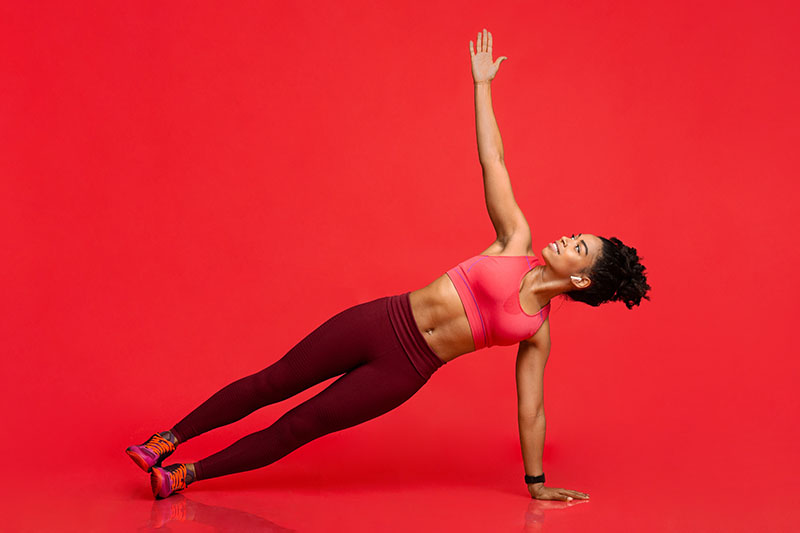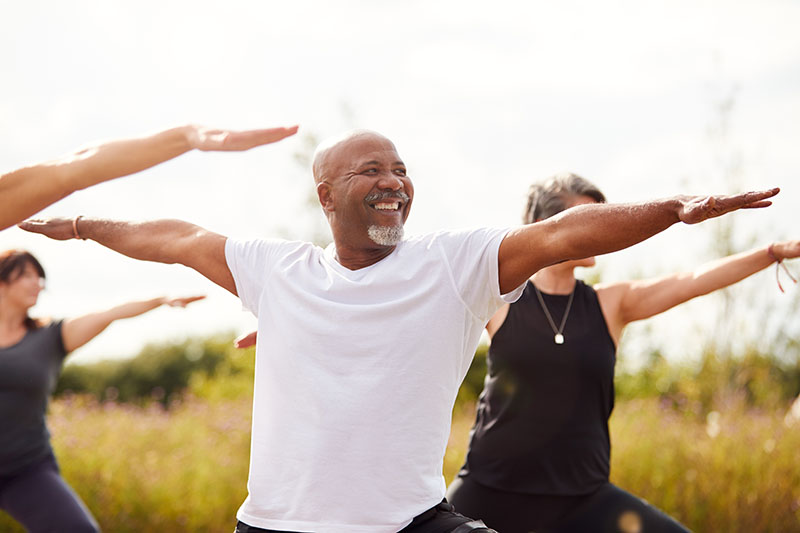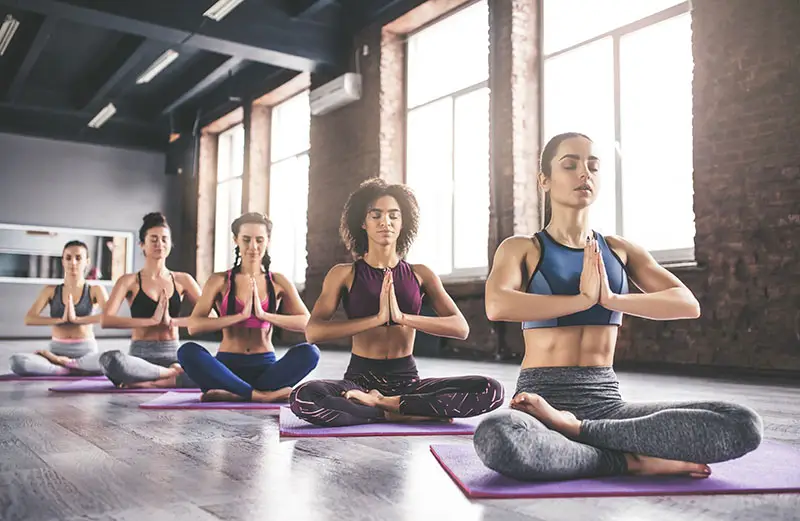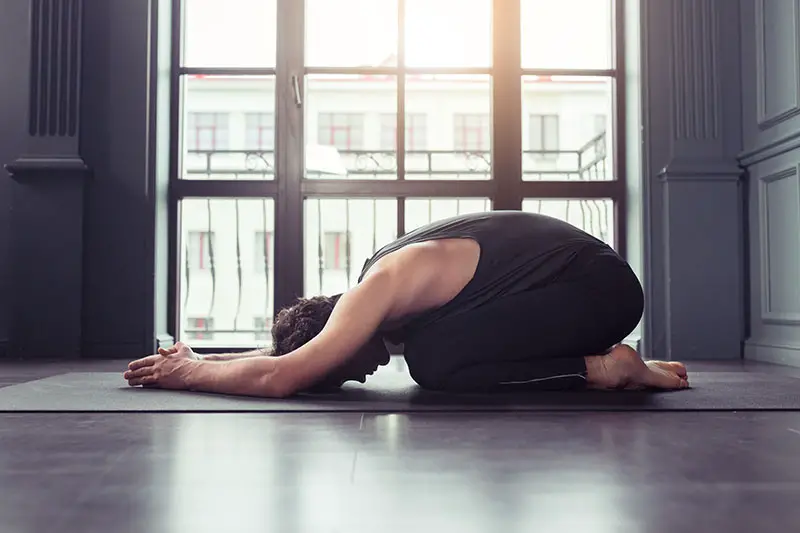While yoga has been around for ages, it seems like more and more people are coming to realize all the amazing benefits it offers. Because of this, there seems to be all different yoga variations popping up these days – hot yoga, power yoga, vinyasa, slow flow and so on. For someone wanting to get into yoga, it can feel overwhelming knowing where to start!
Contents
Any type of yoga you try will bring amazing benefits. As a practice, yoga will increase flexibility, calm the mind, and even improve cardiovascular health. But, if you haven’t yet heard about slow flow yoga, you’re going to want to learn more! It not only has amazing benefits, but it is perfect for all ages and stages of people. From beginners to advanced, it has something for everyone!
But, before we jump into the top 10 reasons you should do it, let’s look at what is slow flow yoga and some important distinctions between it and other types.
What Is Slow Flow Yoga?

What is slow flow yoga? Well, as the name suggests, it is a yoga flow that you do at a slower pace. Essentially, in a class, you will do about half the number of poses that you may typically do in a regular flow class – taking more time and breathing in each pose. For example, in a normal flow, you may take one breath per exercise whereas in slow flow yoga, you could take 3-5 breaths per pose. This will allow you to deepen your pose and really focus on each movement at hand. It is a calmer and more restful practice that incorporates a variation of both Vinyasa and Hatha yoga.
Vinyasa Yoga And Hatha Yoga

Because slow flow yoga incorporates both forms, it’s important to know the difference and how they are combined in this form of practice.
Vinyasa Yoga puts the “flow” in slow flow yoga. Vinyasa yoga is yoga where the movements and poses flow from one another. As opposed to other forms of yoga, each class in Vinyasa is unique and flows differently with a variety of poses and moves.
Hatha Yoga differs from Vinyasa. Hatha Yoga is more of the “slow” in slow flow yoga. It emphasizes the importance of breathing and incorporating your breaths with movements to create a meditative and relaxing experience. Yogis know it for mindful breathwork to calm the mind, bringing peace and focus.
When you combine Vinyasa and Hatha, you get slow flow yoga! It’s the combination of poses and movements that flow together while holding those poses long enough to work on your breath.
Who Should Do Slow Flow Yoga?
The glorious thing about slow flow yoga is that it is great for everyone! The pace is perfect for beginners because they won’t feel overwhelmed or lost, but it is also perfect for more advanced yogis who are looking to push themselves and dive deeper into their poses. The breathing work and calm nature of the class is also perfect for people of all ages and walks of life.
10 Reasons You Should Be Doing Slow Flow Yoga

1. All Are Welcome
As mentioned above, slow flow yoga is inclusive of all yogis, from beginners to advanced. No matter your age or your experience level, all can come to the mat for a slow flow yoga practice and get something out of it. By slowing the moves down, you can stretch and challenge yourself to your own personal limitations, meaning anyone who does the practice will reap the benefits at the level they are at.
2. Calms the Mind
Have a tough day at work? Maybe the kids have been pushing you beyond your breaking point? Well, slow flow yoga will really work wonders for calming your mind and letting that never ending to-do list disappear for a while. Focusing on your breathing and holding moves in your flow can really bring a calmness that you may not have realized you had before getting on the mat.
3. Reduces Stress
Not only does this yoga calm your mind for a short amount of time, it can also reduce your stress levels! Of course, all forms of yoga are great stress reducers, but there’s just something about slow flow yoga and your connection to your breathing that takes it to another level. Taking deep breaths in and out, focusing on one thing at a time, really allows you to relieve your stress and be present in the moment.
4. Low-Impact
With slow flow yoga, you will not be worrying about keeping up with the flow. This practice is very low-impact and won’t put any undue pressure on your knees or joints. Throughout the practice, you have time to listen to your body and read the cues it is giving you. You will feel when you are going beyond your limit and readjust. But either way, you still won’t be doing any superstrenuous or high-impact moves that you must worry about later.

5. Teaches Patience
Sometimes, when you want to do a workout or something physical, we associate it with speed. High intensity, lots of sweating, you know the drill. So, as you experiment with slow flow yoga, you may feel impatient. You may want things to move more quickly to get through the practice, when in reality, that’s the whole point!
Once you get past the natural inclination to want to move more quickly, you’re going to find all the benefits and more. You’re going to learn patience and that the benefits of this practice are in the slow-moving moments.
6. Builds Mental Toughness
While you’re learning patience with the slower pace, you’re also going to be building a lot of mental toughness in holding poses for longer. With regular flow yoga, you’re moving through after a breath, but you’re going to have to train yourself to hold the poses through the discomfort. You may not be used to holding a specific pose for 3-5 breaths at a time, and this will definitely teach you mental toughness and working through the uncomfortable holds.
7. Improves Flexibility
All yoga increases your flexibility, but slow flow yoga is a significant change. Breathing through your poses and focusing on specific muscle groups and stretches for seconds at a time will really take your flexibility to the next level. Not to mention that with improved flexibility comes improved posture and balance as well! The move control and movement you have of your muscles, the better off you will be!
8. Builds Muscles
Similar with improving flexibility, holding the poses for longer will fire those targeted muscles for longer, thus building them in the process! Instead of rushing through your flow, you are really taking time out and focusing on specific muscle groups, one at a time, to benefit your strength in the future!

9. Prevents Injuries
Because you don’t have to worry about keeping up with the pace of the instructor, and you can work within your own limitations and strengths, you will strengthen injury-prone muscles while also working out in a way that will be less likely for you to get an injury!
10. Improves Overall Health
As you can see, there are so many mental and physical benefits to adding slow flow yoga to your regular workout routine. But it wouldn’t do the practice justice without mentioning one of the biggest reasons to give it a go…improving your overall health. Working with your breath and taking time through your flow will improve your heart health, your lung and respiratory health, and more.
Conclusion
Doing any type of yoga will offer you many benefits such as increased flexibility, calming of the mind and improved cardiovascular health. Slow Flow Yoga is a type of yoga that focuses on slowing down the flow of poses. In slow flow, you will do about half the number of poses you would in a regular flow class.
One of the great things about slow flow is that is great for everyone – both beginners and advanced yogis. Some other reasons you should be doing slow flow yoga include reduced stress, it is low-impact, teaches patience and mental toughness, it improves flexibility, builds muscles, prevents injuries and improves overall health.
